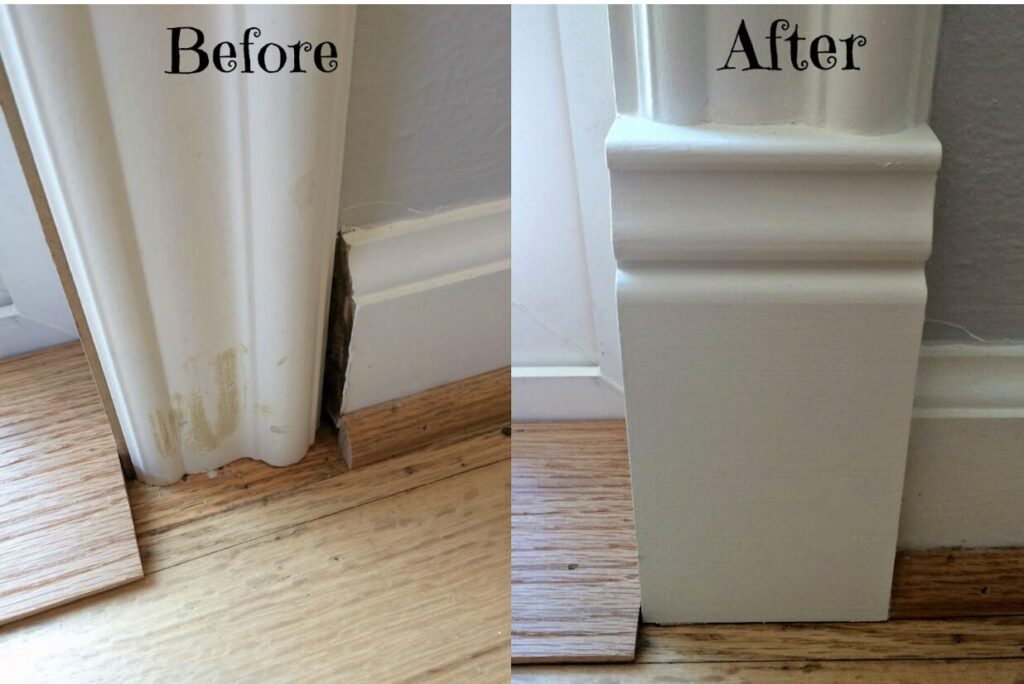Have you ever noticed those decorative squares at the bottom of door trim in older, more stately homes? Those are plinth blocks, and they’re making a big comeback in today’s remodeling projects.
These unassuming architectural elements might seem like small details, but they can add surprising elegance and visual interest to your home.
Discover some creative and practical ways to incorporate these classic elements into your next remodeling project.
What Are Plinth Blocks?
So what exactly are these mysterious architectural elements?
Plinth blocks are decorative transition pieces typically installed at the base of door casings where they meet the baseboard.
Dating back to classical architecture, they were originally used as a solid foundation for columns, preventing moisture damage and providing visual stability. In today’s homes, they serve both functional and aesthetic purposes – covering awkward miter joints while adding architectural interest.
You’ll find plinth blocks available in various materials to suit any budget and style preference. Traditional wood options offer warmth and can be stained or painted to match existing trim.
MDF (medium-density fiberboard) provides a more budget-friendly alternative that takes paint beautifully. For areas prone to moisture, polyurethane plinth blocks offer durability and resistance to warping or rotting.
From simple, understated designs to ornate, detailed carvings, there’s truly a plinth block style for every home.
1. Enhancing Doorway Transitions
One of the most popular uses for plinth blocks is creating smooth, elegant transitions in doorways. Have you ever tried to connect door trim to baseboards at precisely the right angle?
It’s a challenging task even for experienced carpenters! Plinth blocks eliminate this headache by creating a purposeful transition point where these elements meet.
In homes with traditional, Victorian, or colonial styling, plinth blocks can transform ordinary doorways into architectural features. The key is selecting blocks that complement your existing millwork in both size and style.
For standard 2¼-inch door casings, a 3½-inch wide plinth block often works well. Remember that proportion matters – taller ceilings and wider trim call for slightly larger plinth blocks to maintain visual balance throughout your space.
2. Adding Character to Baseboards
Beyond doorways, plinth blocks can add surprising character to your baseboards. They work particularly well in rooms with elaborate crown molding or chair rails, helping to balance the visual weight between the ceiling and floor.
For homes with higher ceilings (9 feet or taller), consider using taller plinth blocks to maintain proper proportion throughout the room.
The 1:60 rule is helpful here – for every foot of ceiling height, add an inch to your baseboard height, and size your plinth blocks accordingly. Historic home renovations particularly benefit from this attention to detail, as it helps maintain the architectural integrity that makes these homes so special.
3. Creative Uses Beyond Traditional Trim
Why limit plinth blocks to just doorways and baseboards?
Furniture embellishment is one unexpected use – adding plinth blocks as decorative feet to bookshelves, kitchen islands, or custom cabinetry can turn ordinary pieces into conversation pieces.
Fireplace surrounds offer another opportunity for these versatile elements.
Incorporating plinth blocks at the base of fireplace columns or where the mantel meets the floor creates a finished, intentional look.
They’re also fantastic for enhancing wainscoting and paneling projects, creating clean transitions between vertical and horizontal elements.
Choosing the Right Plinth Blocks for Your Remodel
Selecting the perfect plinth blocks for your space involves considering several factors. First, think about your home’s overall aesthetic. Is it modern and minimalist? Traditional and ornate? Rustic farmhouse? The style of your plinth blocks should complement your home’s character.
Material choice depends on both budget and location. Solid wood offers classic appeal but comes at a higher price point. MDF provides excellent value for painted applications. For bathrooms or exterior doorways, moisture-resistant options like polyurethane make more practical sense.
While DIY installation is certainly possible for those with moderate carpentry skills, achieving perfect miters and seamless transitions can be challenging.
For whole-house trim upgrades or historic restorations, consider consulting a professional carpenter who specializes in finish work. Their expertise often pays for itself in the flawless results they deliver.
Plinth blocks might be small architectural elements, but they pack a significant design punch in any remodeling project.
From creating elegant doorway transitions to adding unexpected detail to furniture pieces, these versatile elements offer countless ways to change up your home’s interior.
7 Fun and Cost-Effective Home Decorating Ideas


